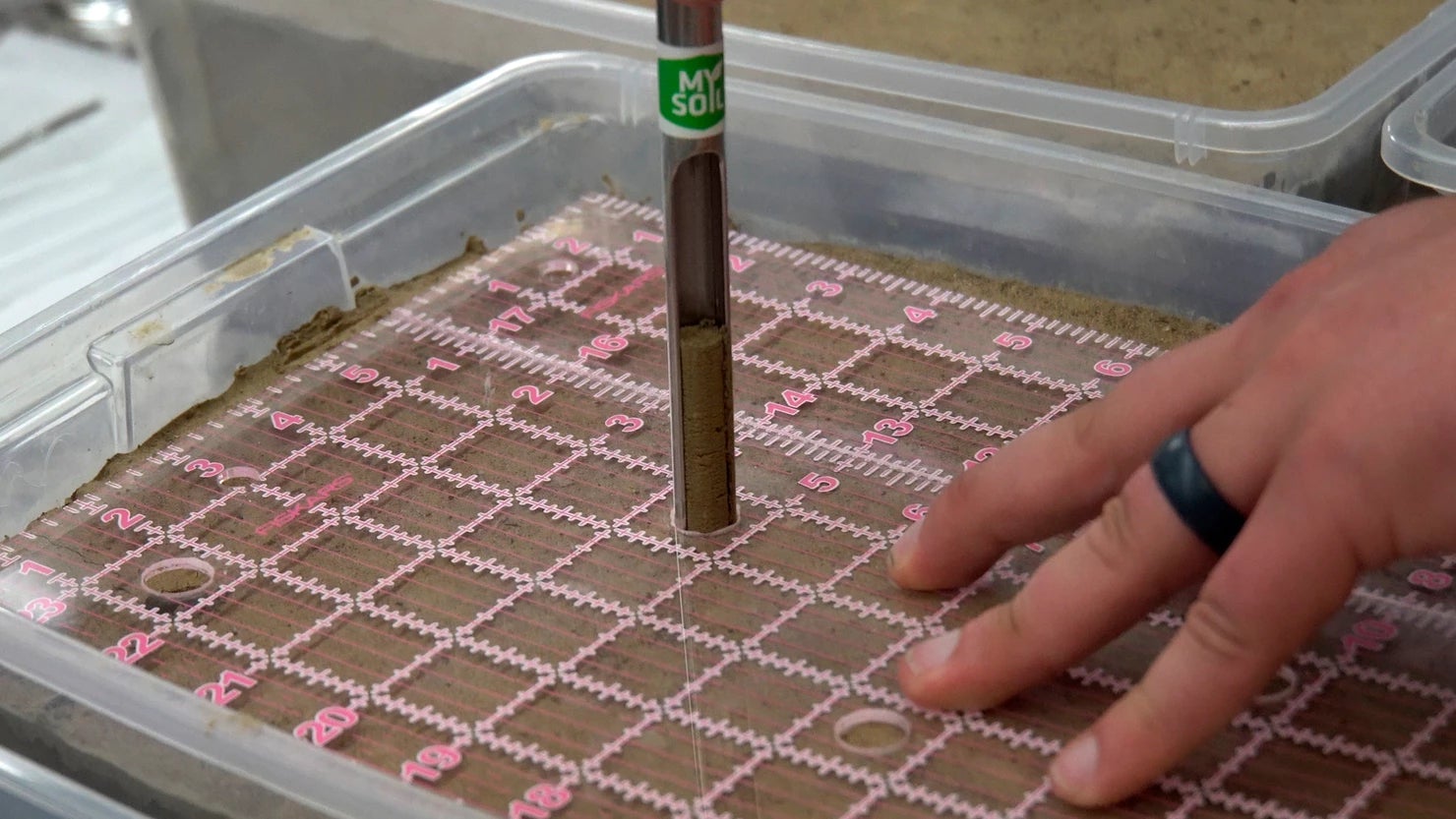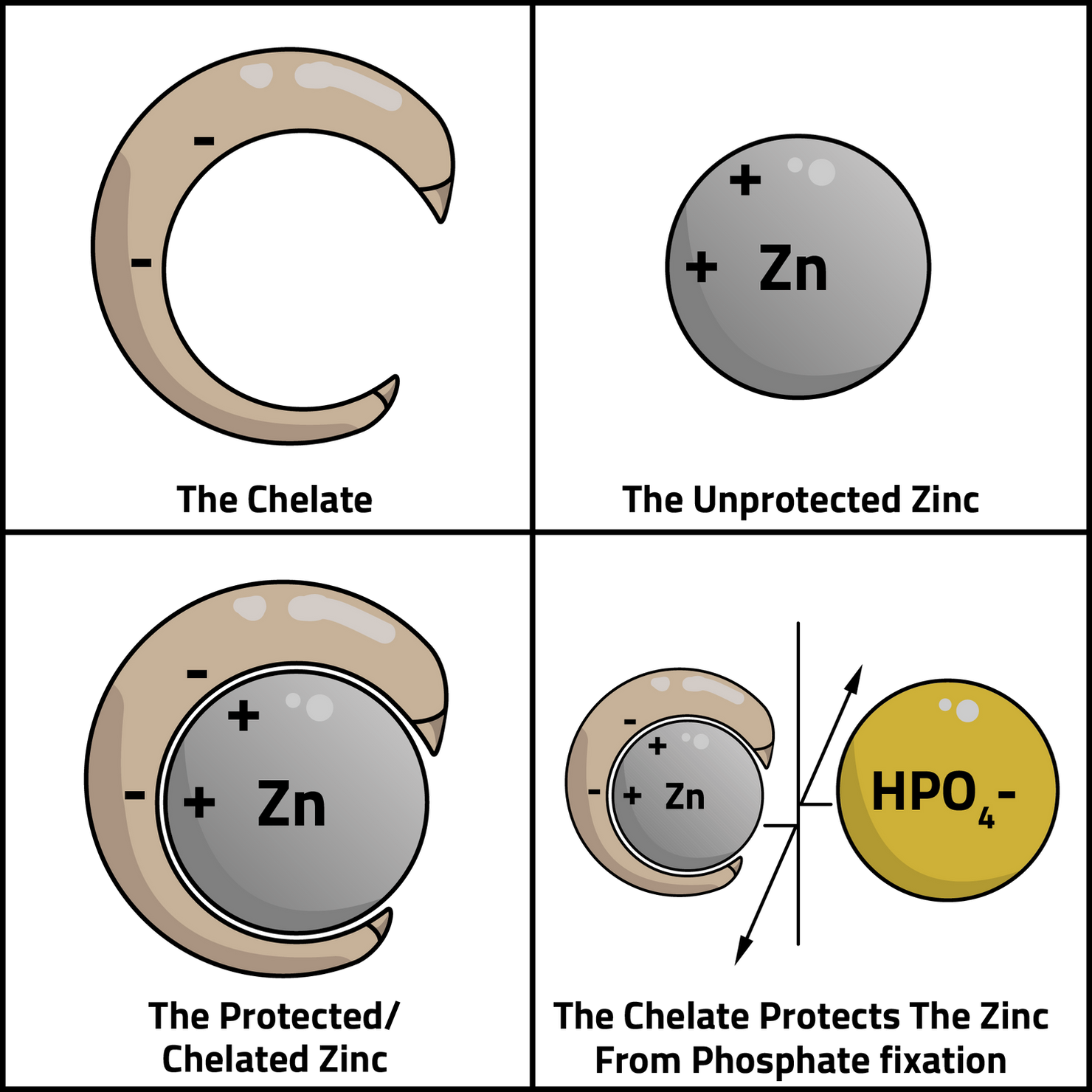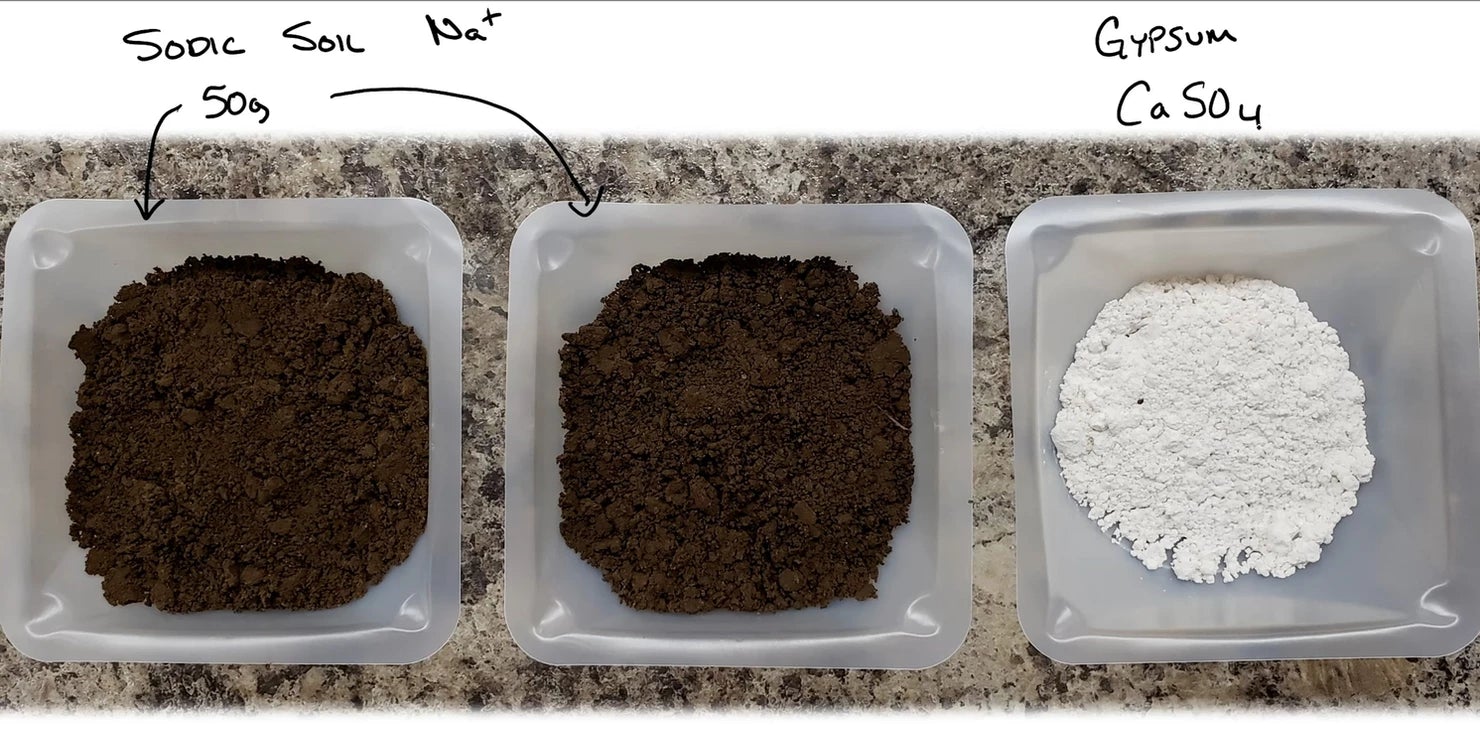MySoil - Mar 17, 2021
What is Gypsum and How Does It Help My Lawn & Garden?
We get many questions regarding gypsum and gypsum recommendations or applications, so we have created a basic explanation and demonstration video which you can find below as well as a more in depth discussion in this blog post. Let’s tackle this discussion question by question.
First, what is gypsum? Chemically, gypsum is calcium sulfate (CaSO4); functionally gypsum can be seen as a soil amendment, soil conditioner, or fertilizer. A soil amendment is anything worked into the soil to make it a more hospitable environment for plant growth and development (gypsum, synthetic conditioner, sawdust, or other organic material), while a soil conditioner is added specifically for the purpose of enhancing physical soil properties such as soil structure.

Second, what is gypsum used for? Gypsum has three typical uses in the home lawn or garden. It can help reclaim sodic soils, it may enhance soil structure (especially in sodic soils), and it may also be used as a calcium and sulfur fertilizer. Sodic soils are soils which are very high in sodium, to the point that it effects plant growth and development as well as the physical condition of the soil. On a soil test, a sodic soil would be classified as having an electrical conductivity value below 4, a sodium absorption ratio above 13, and an exchangeable sodium percentage above 15 along with a dispersed (lacking significant soil structure or aggregates) physical condition. There is a Pacific Northwest Extension publication, which is a collaborative effort between Oregon State University, University of Idaho, and Washington State University, available that well outlines reclamation steps in salt effected soils. You can find it at: Managing Salt-affected Soils for Crop Production, PNW 601-E (Oregon State University Extension Service)
How does it work or help reclaim sodic soils? High sodium, sodic soils have really poor soil structure that doesn’t allow water to move in, or through it, very rapidly. The sodium also often pulls on the water more strongly the plants can, causing them to wilt. Ultimately, we need to get the sodium out of the root zone of our lawn or garden. When we apply gypsum, and water it in, the calcium and sulfur break apart chemically; then calcium replaces the sodium on the soil particles and actually pulls them together to function as larger particles that will then let more water move in and through the soil. Simultaneously, the sodium, no longer on exchange sites, and now in solution combines with the sulfate and becomes soluble, and leachable. The reaction can be seen below, where Sodium = Na+, Gypsum is CaSO4, and leachable sodium sulfate is Na2SO4.

How do you make this work in lawn or garden? You can spread gypsum on the surface and water it in, or, you can till it in or incorporate it before watering, which is preferred. The more thoroughly mixed the soil and gypsum the better. When watering, you want to be sure that you are watering to a depth that is below the rooting depth of your plants. You can easily measure the depth of watering by using a soil probe to check soil moisture. Once you’ve added gypsum and irrigated below the rootzone you simply maintain good soil moisture and allow the soil chemistry to work.
How does Gypsum enhance soil structure? Gypsum, more specifically the calcium in gypsum, enhances soil structure through a process called flocculation. Flocculation is when tiny particles clump together. This is done when calcium bridges the gap between multiple soil particles. It can do this because it is divalent, it has two positive charges. Sodium does the opposite, as it has a single charge.

What is gypsum’s value as a fertilizer? If your soil test indicates that you are low in calcium and sulfur, then gypsum may be a great fertilizer addition. Although products will vary based on purity and formulation, pure gypsum is around 23 % calcium and 19 % sulfur, several commercially available products report 21 % calcium and 16 % sulfur. Based on those numbers a 40 pound bag would contain 8.4 pounds of calcium and 6.4 pounds of sulfur.
A couple of other common questions I get:
Will gypsum raise my pH like lime? The short answer here is no, there’s not a direct or significant impact on soil pH.
Can gypsum help my heavy clay soil with water penetration? In most conditions that we deal with in the lawn and garden, the answer here is again, no, at least not by itself or when used in reasonable amounts. Multiple measures need to be taken to enhance soil structure and water infiltration in clay and gypsum can be one of those measures.
I have a sodic soil and used gypsum, now that I’ve added gypsum will the sodium come back? It may, it depends on the source. Sodium can come from the soil minerals, it can come from irrigation water, or it can be found in compost, manures, amendments, or fertilizers. Careful monitoring, testing, and reading the labels of what you apply can help you minimize the sodium that makes it into your lawn or garden, and if and when it does show up again, you can add more gypsum and move the sodium out of the rootzone again.



